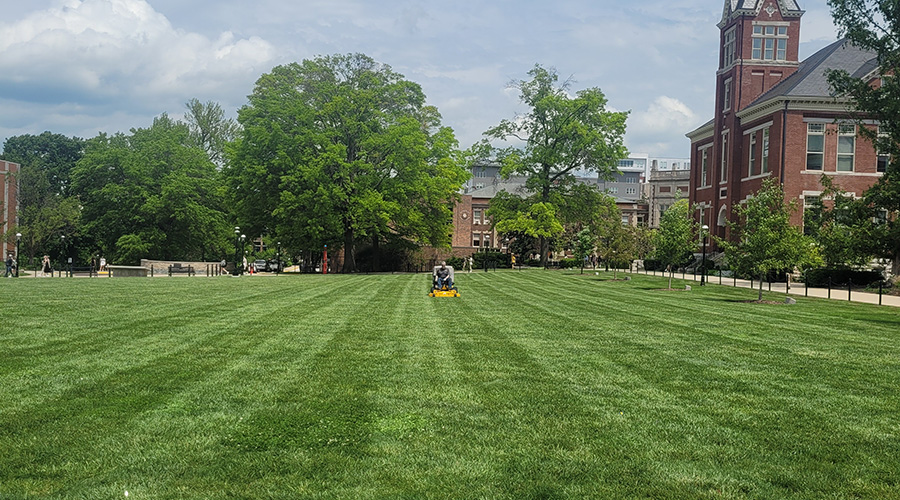Focus on Life-Cycle Costs Can Deliver Big Benefits
Grounds managers are under constant pressure to make the most of their budgets. This task can be especially daunting when it comes to purchasing big-ticket equipment, such as mowers. Many managers in institutional and commercial buildings specifying mowing equipment tend to focus on a mower's initial cost, size, and power, but to ensure they make a financially smart, long-term selection, a growing number of managers are starting to pay closer attention to the total cost of ownership.
"They're all crunched for money," says Paula Sliefert, senior product manager with The Toro Co., adding that a shift in thinking is taking place. "The more sophisticated customers are doing the life-cycle cost analysis."
By exploring key components beyond a mower's first cost — including repair issues, productivity, safety and training — managers will be better able to determine a mower's total cost of ownership and make smarter specification decisions.
More for the Money
Not surprisingly, many managers specifying mowers still focus on up-front savings.
"Typically, it's how we or anyone can save them money," says Jaime Palmer, product manager with John Deere commercial mowing. "They are typically focused on two areas: reliability and uptime, and efficiency." Some managers are becoming more thoughtful in their research, and in more cases, conditions created by the struggling economy affect their decisions.
"For a variety of reasons, they are going to a smaller workforce," says Kevin Conry, senior marketing manager with The Toro Co. "In many cases, for example, they're not filling in for people who retire or leave. They're starting to look more closely at the issue of, 'How can I get more done with less?' So there's significantly more conversation about, 'How productive can we be with different kinds of machines?' "
The answers to those questions come from taking a closer look at a range of factors.
"They want to know about fuel economy, maintenance and wear parts, warranties, trade-in values, and generally, will the machines perform over the lifetime that they want the machines to have," Palmer says.
One response to these concerns from manufacturers is to make changes to mowers that address specific roadblocks to operator productivity.
"We've added features to improve the machine uptime," Conry says. "For example, we've put a reversing fan on some of our larger products to blow out rear screens if they get filled up with chaff. The operator no longer needs to get off the machine to clean off the screen periodically through the day. That way, (the mower) doesn't overheat, and they're not wasting time."
Related Topics:













